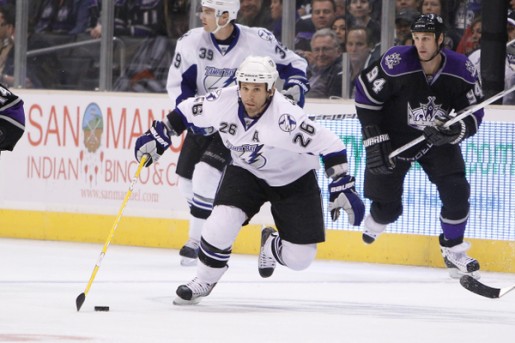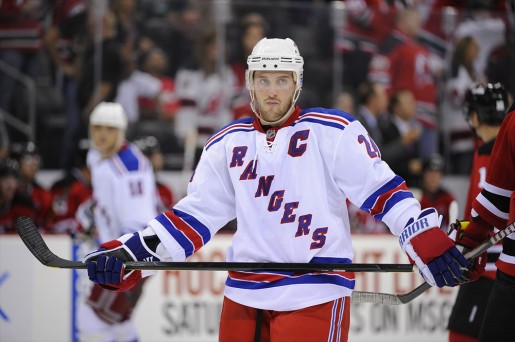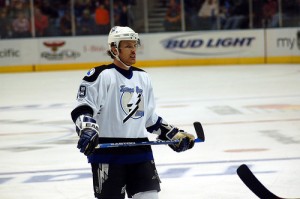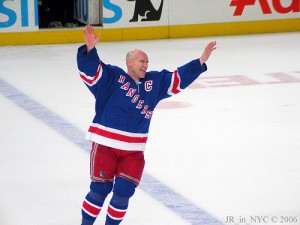
In what has been an already chaotic trade deadline the New York Rangers and Tampa Bay Lightning stole the show exchanging captains. The major catalyst behind this deal was the inability of the Rangers to agree on a long term deal with Ryan Callahan who is in the final year of a 3-year $12.8 million deal he signed in 2011, just before he was given the ‘C’. For Tampa Bay, this deal began when Martin St. Louis was snubbed for the Olympics by GM Steve Yzerman, and rumors began to swirl about him wanting out of Tampa Bay despite later being added to the team as an injury replacement for teammate Steven Stamkos. The basic outlines of the deal are Callahan, 2015 1st round and 2014 2nd round picks for St. Louis although there are several conditional picks involved. Rangers fans have long dealt with one of the most active front offices in hockey and as with all major moves such as this deal, there are several takeaways.

Getting Something for Nothing
The smartest part of this deal for the New York Rangers was that they were able to get value out of Callahan before he departed this offseason. Based on reports of the contract negotiations, the team and its captain were far apart on years and salary, the two most important elements of a new contract. As the deadline approached they moved slightly closer but it seems that they were never realistically close to agreeing on any concrete terms. In all likelihood the Rangers were going to lose Callahan without any return in the offseason when one of the other 29 GMs overpaid for Callahan’s services. Ryan Callahan is not worth $6.5-7 million a year, even with his intangibles. Essentially this deal boiled down to adding one more year to the inevitability of Callahan’s departure with St. Louis signed through 2015 for a reasonable price of $5 million. St. Louis was a nice return as he is still a highly productive offensive player. Through 62 games this year, St. Louis has 61 points and 29 goals, both higher marks than anyone on the Rangers. He has been this productive without Steven Stamkos in the lineup, making the stats even more impressive. With all this being considered, the Rangers were able to get something, a high quality player at that, for what would have been nothing this offseason. Those positive takeaways are complicated with the involvement of two high draft picks in the deal.
![Anthony Duclair [photo: David Chan]](https://s3951.pcdn.co/wp-content/uploads/2013/05/Anthony-Duclair-3-300x199.jpg)
The Wrong Direction
It is not news that the New York Rangers have not won a Stanley Cup since 1994. The team that broke a 54-year drought in ’94 was led by a captain that came from out of town, but homegrown talent like Leetch, Zubov, and Richter made up the core that allowed Messier to come in and succeed. Since that win the Rangers have mirrored the likes of their New York sports counterparts by trying to buy championships rather than grow them. Signing the likes of Eric Lindros, Scott Gomez, and Chris Drury in the years past their prime has continually proved to be a losing venture. On the flip side the blueshirts front office has had great success through the draft, picking up many key pieces to their current success including Marc Staal, Henrik Lundqvist, and Chris Kreider. In the deal for St. Louis, the biggest issue for many Rangers fans will be giving up two high draft picks, potentially two 1st rounders if the Rangers make a playoff run. In giving up these two picks they will be giving up potential prospects like J.T. Miller and Anthony Duclair who they have been able to cultivate through good scouting and player development. Despite all signs that their success comes from patience and building talent through the system, the Rangers continue to make moves to improve temporarily while sacrificing the future because they are distracted by big names like a tourist in Times Square. The thinking behind this trade was that of a team one piece away from being a cup contender and thinking win now over win later. That logic is flawed when the team making that decision is fighting for the remaining playoff spots.

The Domino Effect
In the coming months, this trade will impact the futures of more then the two players involved. One of the toughest decisions facing the Rangers this offseason is whether or not to buy out Brad Richards massive deal which holds a cap hit of nearly $7 million per year through the 2019-2020 campaign. By time the deal ends Richards will be past 40 and Teemu Selanne is the exception not the rule. A buy out this offseason will lower the cap hit by at least $5 million a year in 9 of the next 12 years at which point he will finally be off the books. The St. Louis deal could be a catalyst for the Rangers to buy out Richards on the basis of St. Louis filling the void it would leave for the time being or, if their chemistry proves to be helpful to the team, keep Richards from being bought out. The money that Glen Sather saved by sticking to his guns with regards to Callahan will go elsewhere, hopefully leading to long term contracts for the young integral talent of Zuccarello, Brassard and Kreider, all of whom will be free agents this offseason.

The Search for a New ‘C’
The most difficult part of this trade from a Rangers standpoint is the continued shuffling of the New York Rangers roster. A glaring difference between the cup winners of the past half decade and the Rangers is a level of chemistry and continuity within the teams roster that seems to never be the case in the Garden. This trade is another example of the roster shuffle that stops the Rangers from making the move from playoff series winners to cup contenders. In this case, the front office is not solely to blame, Callahan made maintaing the roster a near impossibility. The reason that fans ire will likely be directed at management is that this is not the first time or the tenth time that the Rangers have failed to keep a core intact. With this latest changing of the guard comes a quest for a new captain, a spot that has shuffled numerous times since Messier wore it proudly, a microcosm of the Rangers struggles. The likely candidates are Ryan McDonagh and Marc Staal, both of whom will be deserving of the honor. Now we just have to hope that they are not traded for a bigger name at a later date.
“On the flip side the blueshirts front office has had great success through the draft, picking up many key pieces to their current success including Marc Staal, Henrik Lundqvist, and Chris Kreider.”
Chris Kreider wasn’t drafted by the Rangers. He come from Montreal as part of the Scott Gomez trade.
David – he was drafted by the Rangers. I was sitting beside him when it happened.
Kreider was definitely drafted by the Rangers. He went from an NCAA championship with Boston College right into the playoffs. I think you’re thinking of Ryan McDonagh–he was essentially a throw-in to the Gomez deal. Talk about a diamond in the rough….
Adam Graves was not home-grown talent. He was acquired from the Edmonton Oilers via trade.